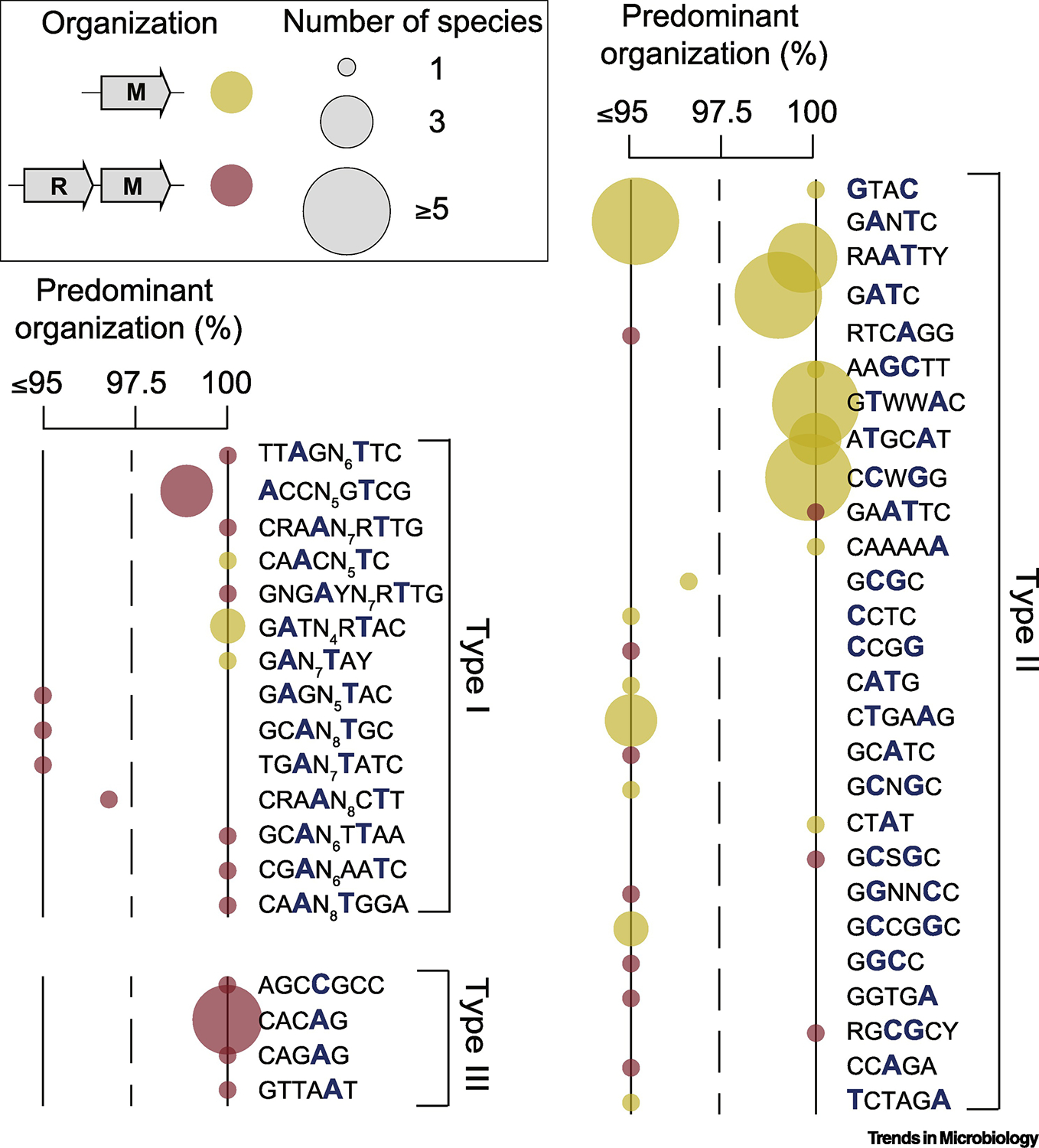Figure 2.

Summary of the organization and target recognition motifs of persistent MTases based on the REBASE database. Yellow circles represent solitary MTases, whereas red ones represent complete systems. 100% means that the MTase is always found either as solitary (without a cognate endonuclease) or as part of a complete R-M system. Values below 100% indicate that both organizations are present, being the most predominant highlighted. For example, Type II GTWWAC-recognizing MTases are exclusively solitary, whereas Type III CACAG-recognizing MTases are exclusively found within complete R-M systems. GATC-recognizing MTases are found as solitary in 98.9% of the species analyzed, and the remaining 1.1% in complete systems. Target recognition motifs shown are based on the REBASE database. Circle radius is proportional to the number of species in which the MTase is present
